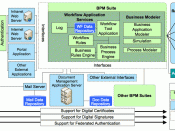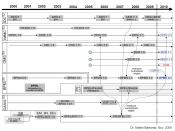introduction in a socio-economic system, management serves as a discipline developed to investigate the business process for the effective achievement of an organisational goal. The business process is a sequence of activities which transform resources to generate added value for customers. Previous attempts at scientific analysis in the field of business management have had their origin in the Newtonian paradigm. The most notable example is Lind's time-and-motion study from the early 1900s. In order to enhance management's control of the production process and operate with greater efficiency, Lind advocated simplifying jobs so that they could be done more efficiently. (Lind & Sulek, 2004)Lind believed that production processes are composed of discrete independent elements. Consequently, he reasoned, one could come to a thorough understanding of a process by breaking it down to its most basic elements and then determine the most effective approach to production. He restructured jobs through simplification and enhanced supervision in order to overcome workers' lack of training, skill and experience.
In viewing the worker as an extension of the machine, his method involved the establishment of many rules, laws, and formulae which replaced the judgement of individual workers. (Lind & Sulek, 2004)Business Process Management (BPM) and Information Technology (IT)Similar to the concept of TQM, BPM recognises the constant change of environment and advocates continuous improvement to enhance customer satisfaction. On the other hand, in contrast to the incremental improvement typified by TQM, BPM is characterised by dramatic improvements in reducing costs and enhancing competitiveness. It calls for exploiting the power of modern information technology to radically redesign business processes, instead of simply speeding up old processes, in order to achieve dramatic improvements in performance (Hammer, 1990). The basic concept of BPM is readily comprehensible.
However, Hall et al. (2005) cautioned that the complexity of implementing a...


